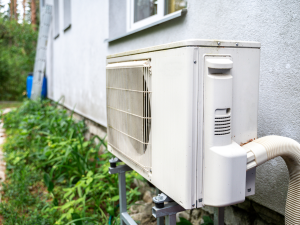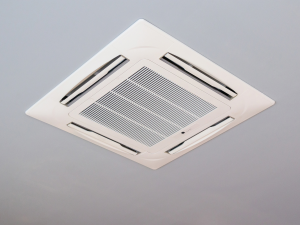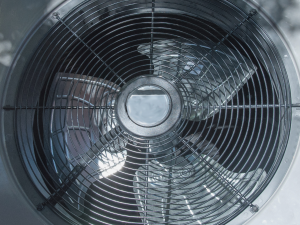HVAC malfunctions can be frustrating. The inconsistent heating and cooling, complete breakdowns, or even dangers exposed to your home due to HVAC issues should not be taken lightly. If you have a furnace or central heat & air system, you know that the thermostat is a component of the system. Though complex, a simple thermostat issue can cause your HVAC system to malfunction or even break down, and this can be frustrating not to forget dangers that could arise due to HVAC system malfunctions. If you notice that your thermostat is not working, not communicating properly with the HVAC system, or is not displaying on the screen, then you need to have it checked. Here are some of the common problems that could be causing your thermostat to act up.
1. Wrong positioning
There is a reason why your HVAC technician recommended that the thermostat be placed a certain way and in a specific location. For instance, thermostats should not be placed in direct sunlight or too close to any source of heat. This is because the thermostat will read higher temperatures in the house that is warmer than the house making the AC run constantly or produce less heat. While this is not a common problem especially if installed by an HVAC specialist, you might have placed a new source of heat near the thermostat oblivious of the apparent risks. The only solution to this problem is to contact an HVAC specialist and have the thermostat moved to a more ideal location.
2. Malfunctioning batteries
A thermostat cannot run without batteries. If you are getting a low power warning on the thermostat, ensure you have the batteries replaced. Luckily, you do not need a technician to replace the batteries. Just open the cover and put in the new batteries.
3. Your thermostat was improperly installed
HVAC systems are complex. While some homeowners prefer to DIY lots of things, most HVAC functions require professional installation. And when wrongly chosen, an inexperienced technician can mess up lots of HVAC functions via improper installations. For instance, if the thermostat wires are either loose or not tightly fixed to the thermostat, that could be the cause of the thermostat issues. Trying to fix the problem by pulling the thermostat or straightening the wires can cause more damage to the HVAC system and even cause electrical issues in your home. This issue can only be solved with the help of a qualified technician, so be sure to reach out to one and get it professionally sorted.
4. The thermostat has program defects
Modern thermostats are computerized. This means that they run on specific programs. And if incorrectly programmed, your thermostat will not work optimally. Most thermostats run well for years without trouble. However, once they develop program issues, then they need to be replaced.
5. Dirt accumulation inside a thermostat
When grime accumulates inside a thermostat, the device does not gauge the correct temperature of the air in a room. Any build-up such as dirt, dust, nicotine, and household sprays can coat the mechanical and electrical components within the thermostats. As such, the optimal temperature set cannot be reached. Older thermostats can be cleaned by gently dusting the inside of the cover with a piece of paper. While this gets the grime off, a compressed air sprayer works best to clean the dust on the wires.
6. The thermostat is not leveled
As houses shift and settle, the level of the thermostat may be interfered with, making it tilted or slanted. The level could also have been changed if you added features in your home or you have an ongoing construction near the placement of the thermostat. If you have a mercury bulb thermometer, it cannot function properly when it is not level. To confirm whether the thermostat is level, use a bubble level and ensure that it sits straight.
7. Improper setting on the anticipator
The anticipator may seem like a small normal device on the thermostat. However, it controls how long the AC system runs. When wrongly set, the thermostat will not reach the optimal room temperature. If the AC is cycling too frequently, adjust the anticipator closer to the longer settings. If the AC is not reaching the optimal temperature, set the arm farther from the longer setting. The system should adjust within 2-3 hours.
8. Your thermostat is old
Just like all HVAC components, your thermostat may not last forever. As it ages, you are likely to experience more problems, necessitating a replacement. Ensure you replace the thermostat with a modern and programmable one.
Tired of constant AC issues? Here are some extra tips to prevent common thermostat problems.
- Consider purchasing a programmable thermostat– Remembering to adjust your thermostat daily can be difficult. With a programmable thermostat, you can schedule your settings and go about your daily activities. Most programmable thermostats are easy to operate and can even be controlled with a smartphone!
- Keep the HVAC system clean– Your AC system needs regular maintenance for optimal performance. Dirt affects your thermostat calibration hence interfering with its operation. Ensure that you change filters every three months or as recommended by the manufacturer.
- Always check the thermostat settings– Regularly checking the thermostat settings is vital, especially when you are not using a programmable thermostat. And even with a programmable thermostat, various issues such as losing a Wi-Fi connection or a power outage could make your thermostat revert to factory settings. A good rule of thumb is setting the thermostat back a few extra degrees if the home is unoccupied.
- Schedule HVAC regularly– No one likes surprise HVAC malfunctions. Ensuring that your entire system is regularly inspected and repaired where faulty is the key preventive measure for all problems. Your HVAC technician can also identify small issues that would otherwise cause costlier problems if not handled. This also reduces unnecessary wear and tear, hence preventing regular breakdowns and prolonging your system’s lifespan.
If thermostat problems persist even after trying all the possible solutions, then it might have run its course. Luckily, thermostats are relatively inexpensive to purchase and replace. For better functionality, opt for a programmable thermostat. Also, ensure you have the thermostat installed by a professional HVAC specialist.




